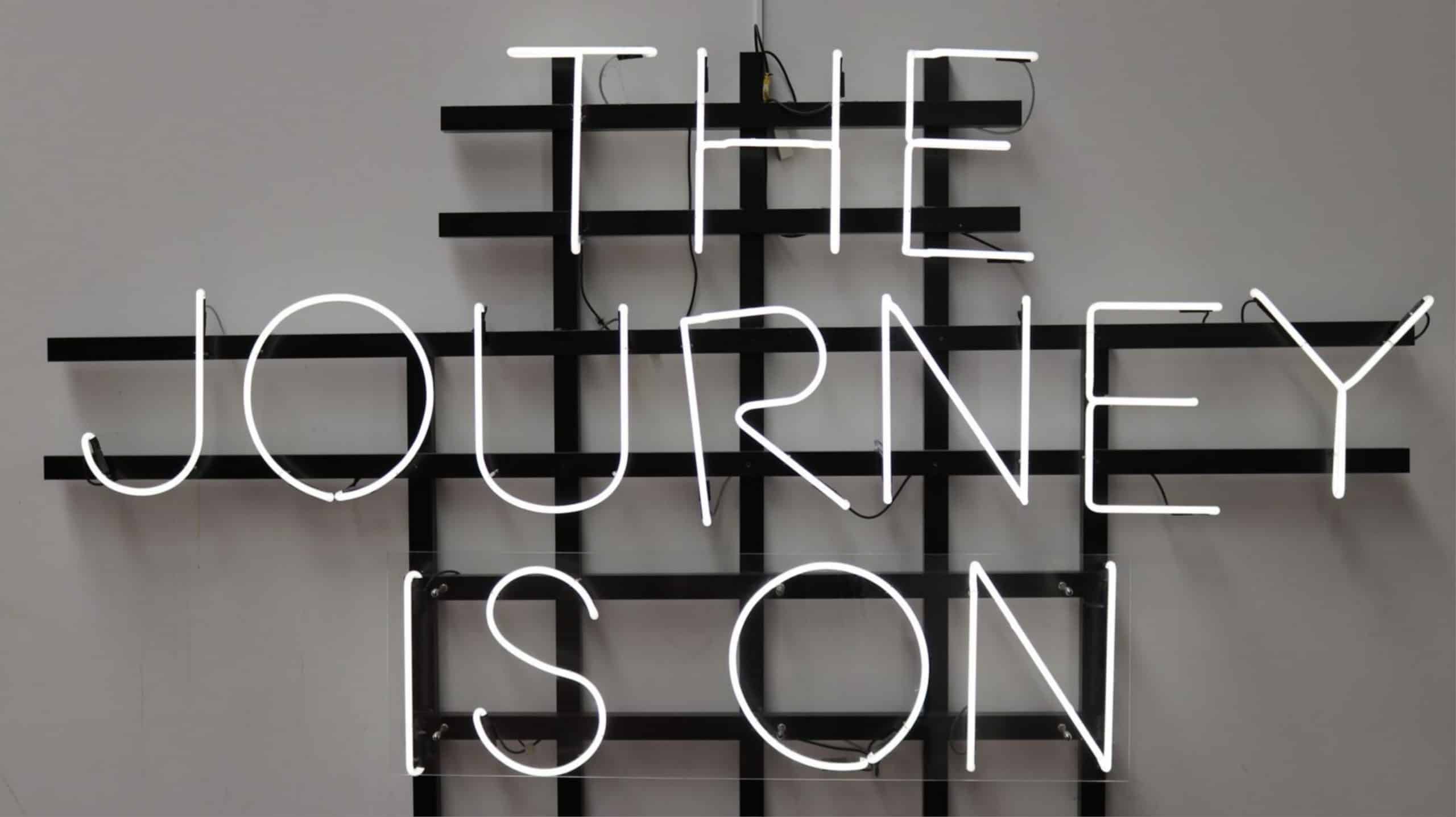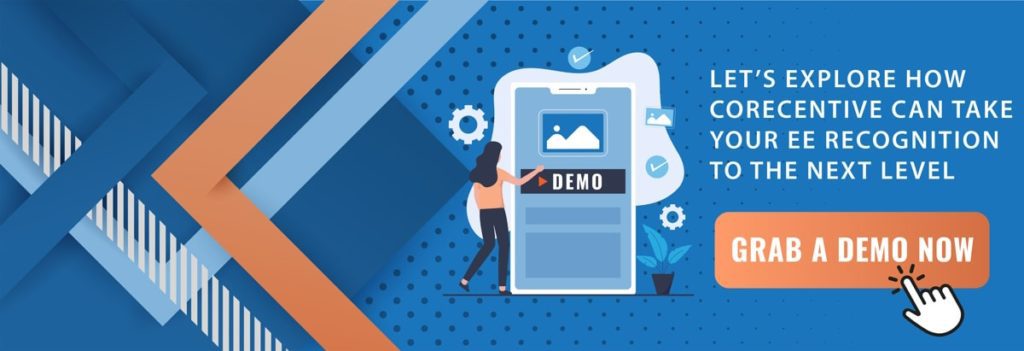The ease or difficulty of the customer journey in the world of recognition, reward, and incentives is significantly impacted by how we, as sellers, set up the process and think through what our buyer is trying to accomplish, their goals, their challenges, and if our process makes that easier or more difficult.
So let's walk through the many factors we need to consider as the seller and then take a deep breath and an honest look at our organization and if we are doing our job to smooth the path for our buyer.
The impact of a very busy marketplace
The marketplace is extremely busy, constantly moving, and information-rich. Possibly information-rich to the point of over-saturation, especially in hot categories where there are rapid growth and hyper-competition. The frantic effort on our part to gain attention, to implant a message, to make an impression is ever-present, which makes the journey complex as our buyer decides to start the process.
Supporting this point, in a recent article posted on Gartner.com, they found that 77% of B2B buyers described their experience as "very complex or difficult." So we need to accept that the B2B buyer is likely overwhelmed and possibly even confused. This holds true for the customer journey in the world of recognition, reward, and incentives as well.
It has become commonly known that about 70% of the buying decision has already been made in the case of an active buying process. However, according to Gartner, our buyer is only spending about 17% of the overall process meeting with multiple suppliers, and on top of that, only 5% to 6% with any particular rep! The rest of the time is doing both online and offline research, meeting with often 6 to 10 internal buyers and other activities.
But complex or not, there are still users of products and services looking for partners and resources, so it's up to us to create a path that is simple, easy to navigate and efficient so that the prospect feels sufficiently educated and that they are making the best decision for their organization.
The Recognition/Reward Buying Process
Who is the buyer?
The "buyer" can be considered the company itself as represented by the various people from different areas in the company with varying responsibilities who also intersect with the purchase or use of the program. Because recognition and reward programs can impact any department or the whole organization, often, multiple people will have a say in the purchase process. There are the users, the influencers, buyers, deciders, and gatekeepers. Often the terms economic buyer and strategic buyer are also used to describe the buyer. The economic buyer is anyone in the organization responsible for efficient and effective use of funds, while the strategic buyer looks at the bigger picture of what programs will move the company in the right direction and contribute to overall success.
The user is most often the senior representative for Human Resources. They will actually run the program and make sure it aligns with corporate objectives. Often, the person in this role will be closely connected to the thinking of the strategic buyer and the "why" of the program.
The influencer may not have an official role in Human Resources, but may have been with the company for many years or been around the Recognition Industry and has significant experience with various resources so can provide valuable insights into the best selection for their needs
The buyer holds the budget and is responsible for the proper and efficient use of financial resources and may or may not also be the senior Human Resources contact. If HR has its own budget and full control, then HR would be the user and the buyer. They may also play a role as either the direct economic buyer in a smaller organization or an influencer to the economic buyer in a large organization.
The decider would often be a senior executive who is ultimately responsible for various budgets as a whole and will have significant power to fund or not fund major initiatives within any organization. The decider(s) are also the economic buyer as well.
And gatekeepers are typically the first person to reach out to possible resources and may seem like the most junior person in the mix, but in reality, they can have significant control over who is even considered to be part of the bid process. If you can't get past the gatekeeper, then the rest won't matter.
Whichever the title or role, each can influence the process to a lesser or greater degree, and each must be understood and respected for the important role they play.
The Buying Process
While there are various roles as just described, once the dialog has begun, there will be a primary point of contact, so functionally, this is the "buyer," and this person takes on the responsibility of bringing viable, reliable candidates into the process. The first stage of the customer journey in the world of recognition, reward, and incentives begins where the representative for the company has been tasked with finding a new partner to run their recognition/reward program that may touch every employee in the company. Depending on the size of the organization, scope of the program, and critical nature of execution, this will determine the depth of research that will likely occur before the first conversation.
To emphasize the point, there will be a significantly different level of pressure when replacing a 250 employee organization running a years of service program giving away 50 plaques a year budgeted at a few thousand dollars vs. a 35,000 employee Total Rewards global program with multiple internal initiatives and multi-million dollar budget as well as very high visibility in the C-Suite.
There is also the factor of whether there is an urgent need to find a replacement (there are serious problems with the program) or if this is a periodic check to be sure they are getting the best offer and best fit for the program needs.
This is where the buyer will start to explore resource options and establish some form of a spreadsheet that identifies "must-have" capabilities and experience that will meet the base needs of the program. This is the first filter to include or exclude possible options. As was already mentioned, statistically speaking, buyers are about 70% towards a decision by the time we first speak to them, and often this spreadsheet is already being filled out by the time a resource is contacted.
Considering the process and limited time for our buyer, it is very important for the resource company to carefully monitor information in the places the customer is learning about us. Also, consider that for many B2B purchases, all of the basic functions needed to run efficient and reliable programs may be considered simply table stakes. According to the Harvard Business Review online article "The B2B Elements of Value", once those core capabilities are checked off, our buyer is very likely to be thinking about "…considerations such as whether a product can enhance the buyer's reputation or reduce anxiety…". And this isn't theoretical anxiety. A resource may check all of the criteria and capability boxes, but what about the working relationship? What about the customer retention rate? There can be large, well-established resources that have a great history but are difficult to work with. And a smaller, newer company may not have the same history, but be offering an innovative new solution with excellent, high touch customer service. It's not only about checking the product and service boxes, but it's also about establishing real reasons to trust that this will be a smart decision for the buyer's career and life. We have heard the old adage about people will buy from other people they "know, like, and trust." It turns out there is more to it than we know.
Researching the Options
Once the process begins in earnest, there are common resources that are tapped to identify reasonable candidates, and since this will be 70% of the decision, it is important that they are up to date, clearly written, and easy to navigate. Unless the purchase is for passenger jets, the likelihood is that there are a good number of options, so if there are any red flags, the person will just move on.
Website – The website for any company sets the tone and impression and is a clearly superior resource to find out far more about a company than any advertisement can offer. With this in mind, websites must offer a very simple, clear, complete picture of services offered in a frame that makes sense for the buyer organized by category of service, capabilities, geographic regions served, whatever makes the most sense for how a business is positioned and presents the most accurate picture of the types of programs it is best suited to support.
Articles and Blogs – The explosion of blogs on every subject you can imagine creates a business environment where it is logically and fairly expected that business sites also share insights and experience on various subjects. This is an opportunity to get further into detail and nuance of recognition and reward services and strategy not always as effective in other formats. So, blogs can create a new avenue to share industry insights and become a resource for our buyer.
Referral – Sometimes, a referral happens when colleagues discuss current projects, and a recommendation is made. Other times it happens in a conversation at some other business function or dinner with a colleague from another industry, and when the need comes up, the suggested company comes to mind. The primary value of a referral is because it commonly comes from a trusted contact, which results in shortening the research time.
Our Recognition/Reward Buyer
- Our buyer is also buying other products and services – While the customer journey may feel particular to Recognition/Reward as a service, the fact is that the same buyer is likely involved in other buyer journeys within their job function and as a retail consumer. It's not possible to completely separate these other expectations and experiences. While we can't mirror exactly the Apple Store buying experience, that is in our buyers' head somewhere lurking, somewhere expecting pieces of that experience.
- They are under enormous pressure to not make a mistake – Not making mistakes, which comes from fear, is not the same as making great decisions. There has been a saying in the B2B space for generations that goes, "No one gets fired for buying IBM." For the younger audience, when computers and data management were growing at frantic paces, IBM was the 800-pound gorilla, and while they may not have offered the perfect solution, they were a rock-solid provider and whatever they offered was reliable and had top-shelf service, so the saying planted a seed and perpetuated the notion that whatever you do unless you had a compelling reason otherwise, make the "safe" purchase for the SOLE purpose of not getting fired.
- Our first "buyer" may not be our buyer – The person we first connect with who is representing the organization consider our service may not indeed be the final vote. We like to ask, "who can say 'no' to this purchase?" which often causes a subtle pause, a slight tip of the head, and then a reality check of "well, actually (fill in the blank) will have the final say." Whoever starts the dialog remains the most important person at that moment, so it's up to us to get them the information they need and comfortable enough to be confident of keeping us moving forward in the process.
When is a Buyer a "Buyer"?
Not all buyers who step out into the marketplace are true "buyers." For someone to be a true buyer, they have passed through the first two stages of the buying process.
Stage 1: Someone or group is aware that there is a problem negatively impacting the recognition program, and it is serious enough and identified well enough that they understand what problem/issue needs to be fixed and therefore have some understanding of the services needed to improve the program.
Stage 2: They are committed to making a change. With commitment, the process will move forward with purpose and on a schedule because Stage 1 in a mutually agreed issue. Without it, whatever conversation is going on, and it's not about considering a new resource
Without these two stages, there really isn't a buying process going on. It may be researching, and it may be picking up information to leverage against a current vendor, it may be pure curiosity. But no matter how impressive the prospect's profile and budget are, without a firm commitment that the current resource cannot solve the program and this problem is clearly identified, and the problem is significant enough that change is necessary, it is highly unlikely that there will be any meaningful movement.
The Rest of the Journey
Assuming this is true buyer, the next stages should move along this path according to their normal process, so it's important to spell out what that process is and be as specific as possible, so both parties are on the same page. There could be a reason that there will be gaps between stages due to travel schedules, new hires, changing management, or other viable and unavoidable reasons, so get that clarified upfront.
Stage 3) Are other resources a better solution? The first presentations are done, and the entire team has had a chance to voice opinions about the benefits and shortfalls of the various companies being considered. And there always is a trade-off. No company has everything that everyone on the buyers' side wants. There is often someone on the committee who still believes it's best to stick with the existing vendor, not necessarily because it's the best choice but because of reluctance to change and the work necessary to move from one resource to the next. To move beyond this stage, there must be agreement that, yes, the current vendor is out, and it is time for a change.
Stage 4) Ready to commit to A solution, not necessarily a particular solution While it may seem like this is the end, think of this as reaching the 10-yard line in a football game, and the clock may or may not be running. These are the hardest 10 yards in football as well as in sales. This can often include bringing back the top two companies for clarifying questions and a refresh for the committee. There will be final votes to make sure everyone is on board and final cases to be made of the pros and cons of the current vendor as well as the new solutions. Pushing the decision could be calendar considerations or possibly pressure to get budget assigned or other reasons. The very best reason is that one or more of the new resources has made a compelling case of how making a switch will materially change employee engagement and productivity as well as cost efficiencies, which will reflect well on the committee and move the organization forward.
Stage 5) Final specific Selection Now is the time when the person or persons on the team with the most at stake will endorse or recommend the specific resource to be awarded the project, and that wonderful phone call is made "we're moving ahead with your company." This is when, for the resource, the prospect becomes a client, and the discussions begin to lay out the full detail about the transition process. People on the client-side, with the most at stake, will be watching to see the same energy during the presentation phase to earn the business to now manifest for the launch and running of the program.
Stage 6) Post Award Review This may sound like pessimism, but it isn't over until the program is up and running, and invoices are flowing. This is where all the expertise and top-notch customer service and years of expertise all come under the most critical review by the client. This is where they are either relieved to finally be fixing and improving the program or concerned if they made the right choice. Decisions have been made, and reputations are on the line, and the transition and launch process is where reputations and projects can be solidified.
Review
We all know that buying decisions are made virtually every day in every industry, large or small. Some are routine, and some are monumental. Some keep operations moving smoothly by not changing a thing. Other times a bold decision is made to change, which puts people's jobs and reputations on the line. This should motivate us to keep our websites up to date, thorough and clear in the messaging, and provide insights into our thinking and expertise through blogs and articles. As we work with every single client, every single day, remember that our reputation may be shared at any point with people we don't yet know.
It may seem obvious, but it's worth stating that we are best served by doing excellent work from start to finish and deliver on the promise we make when we are fortunate enough to win a new project. So that our buyer, who took that chance to be our champion, to help us get over those last 10 yards, years later, they will still be saying it was one of the best decisions of their career.
If you are in the market and are about to embark on the customer journey in the world of recognition, reward, and incentives to review or refresh your employee recognition and interested in experiencing professional analysis and honest dialogue, schedule a demo with CoreCentive today.


